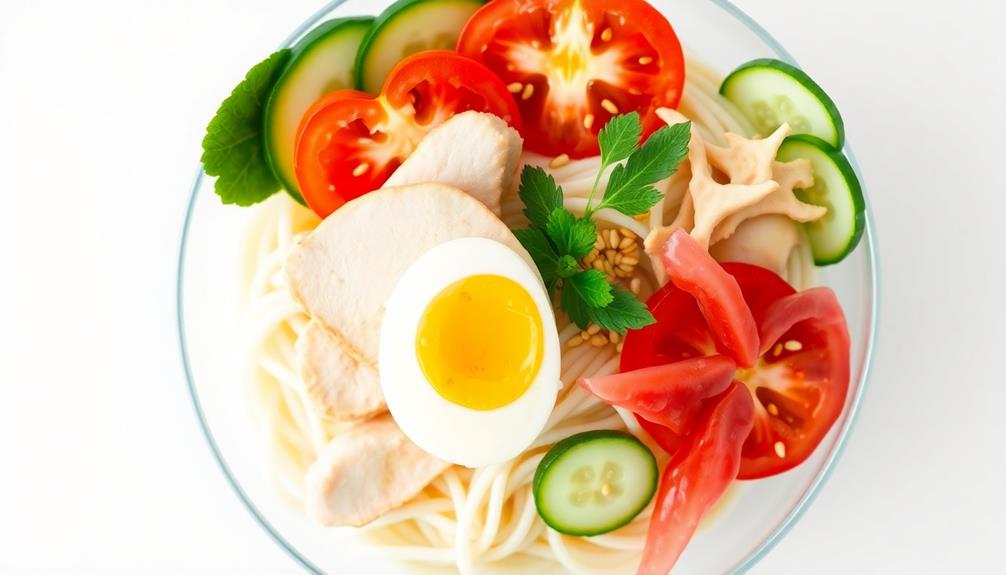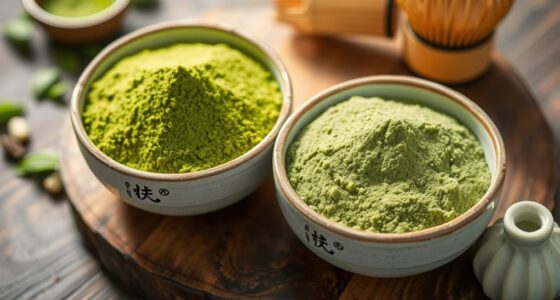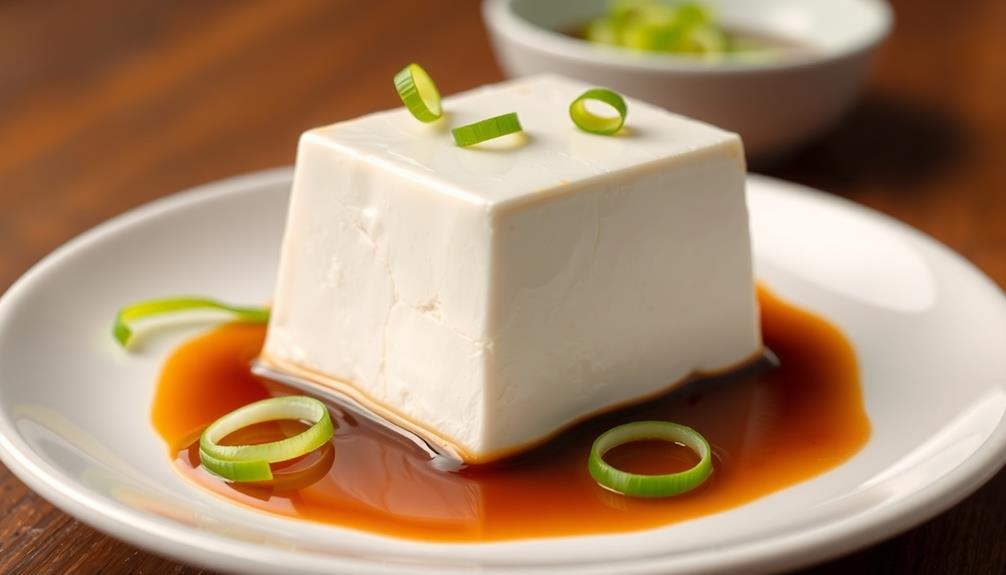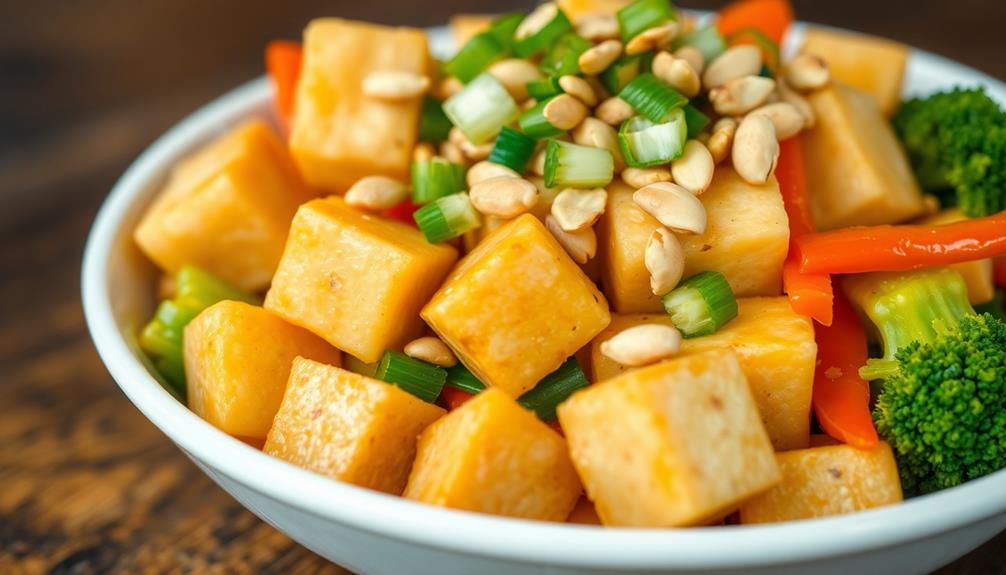When the mercury rises and you crave something refreshing, you can't go wrong with hiyashi chuka. This chilled ramen dish combines the best of Japanese and Chinese cuisines, offering a burst of flavors and textures that'll tantalize your taste buds. Though it may seem simple, the careful balance of savory, sweet, and tart elements is what makes hiyashi chuka a summertime standout. Intrigued? Let's dive deeper into the history and preparation of this versatile dish – you might just discover your new favorite way to beat the heat.
Key Takeaways
- Hiyashi Chuka is a Japanese summer dish featuring cold ramen noodles, fresh vegetables, and various proteins, often seasoned with a soy-based dressing.
- The dish emerged in Japan in the 1950s, reflecting a blend of Chinese culinary roots and distinctly Japanese flavors like soy sauce and sesame oil.
- The key components of Hiyashi Chuka include a base of chilled ramen noodles, fresh vegetables like cucumber and carrots, and proteins such as chicken, shrimp, or boiled eggs.
- Preparation involves cooking the ramen, draining and rinsing it under cold water, tossing it with a soy-based dressing, and garnishing with various toppings.
- Hiyashi Chuka is a refreshing, customizable dish that is typically enjoyed during the hot summer months in Japan.
History
Although the origins of hiyashi chuka are unclear, it's believed to have emerged as a summertime dish in Japan during the 1950s. As the weather grew warmer, people sought refreshing meals that could be served chilled. Hiyashi chuka, with its cold noodles and crisp vegetables, fit the bill perfectly.
The dish's name translates to "cold Chinese-style," reflecting its roots in Chinese cuisine. However, hiyashi chuka quickly evolved to feature distinctly Japanese flavors, such as soy sauce, rice vinegar, and sesame oil.
Over time, it became a beloved seasonal favorite, enjoyed as a light and satisfying meal during the hottest months.
Today, hiyashi chuka remains a summertime staple, with variations that include different proteins, vegetables, and dipping sauces. Whether you're cooling off on a sweltering day or simply craving a refreshing noodle dish, hiyashi chuka is the perfect choice to savor the flavors of the season.
Recipe
Hiyashi Chuka is a refreshing Japanese cold noodle dish that's perfect for hot summer days. The dish features chilled ramen noodles topped with a variety of colorful and flavorful ingredients, creating a visually appealing and delicious meal.
Originating in Japan, Hiyashi Chuka has become a popular summertime staple, offering a cool and satisfying alternative to hot noodle dishes. The combination of the chilled noodles, crisp vegetables, and savory dressing makes for a truly harmonious and refreshing dining experience.
- Ramen noodles
- Cucumber
- Cooked chicken or shrimp
- Tomatoes
- Boiled egg
- Pickled ginger
- Sesame seeds
- Soy sauce
- Rice vinegar
- Sesame oil
- Sugar
- Salt and pepper
To prepare the dish, cook the ramen noodles according to the package instructions, then rinse them under cold water until they're completely chilled. Arrange the noodles in a serving bowl and top with the sliced cucumber, cooked protein (chicken or shrimp), halved tomatoes, and boiled egg. To finish off the dish, drizzle with the prepared dressing and sprinkle with sesame seeds and green onions for added flavor. Enjoy this refreshing and satisfying meal on a hot summer day! The history of ramen can be traced back to China, where it was originally called “shina soba,” meaning Chinese noodles. It wasn’t until the 19th century that ramen made its way to Japan and evolved into the iconic dish we know and love today.
Whisk together the dressing ingredients (soy sauce, rice vinegar, sesame oil, sugar, salt, and pepper) and drizzle it over the noodles and toppings. Garnish with pickled ginger and sesame seeds.
For best results, allow the Hiyashi Chuka to chill in the refrigerator for at least 30 minutes before serving to allow the flavors to meld together. The key to a successful Hiyashi Chuka is to use high-quality, fresh ingredients and to maintain the perfect balance of flavors and textures.
Enjoy this refreshing and delightful dish on a warm summer day.
Cooking Steps
First, cook the ramen noodles according to the package instructions.
Drain and rinse the noodles with cold water to cool them down.
Then, toss the noodles with the dressing, making sure they're evenly coated.
Lastly, garnish the dish with your desired assortment of toppings and serve it chilled.
Step 1. Cook Ramen Noodles According to Package
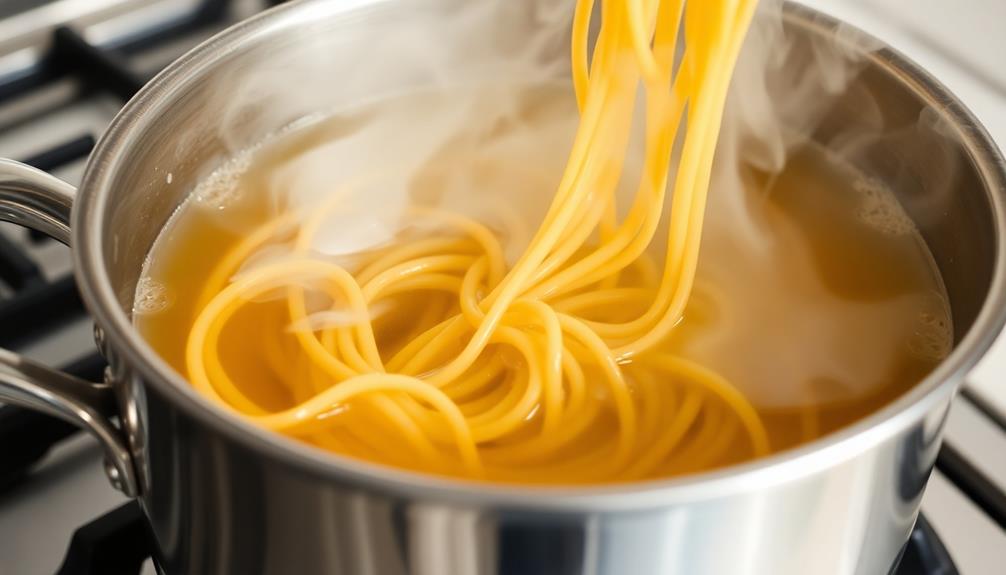
To begin, bring a pot of water to a boil according to the package instructions. Once the water is boiling, add the ramen noodles and cook for the time specified on the package, usually 2-3 minutes.
Don't overcook them – you want them to be tender but still have a bit of bite. Drain the noodles in a colander, then rinse them under cold running water to stop the cooking process and cool them down. This will also help remove any excess starch.
Gently shake the colander to remove any excess water. Your perfectly cooked ramen noodles are now ready to be dressed and served chilled for the Hiyashi Chuka dish.
Be sure to follow the package instructions carefully, as cooking times can vary between brands. With a bit of care, you'll have perfectly al dente noodles to work with in the next step.
Step 2. Drain and Rinse Noodles With Cold Water
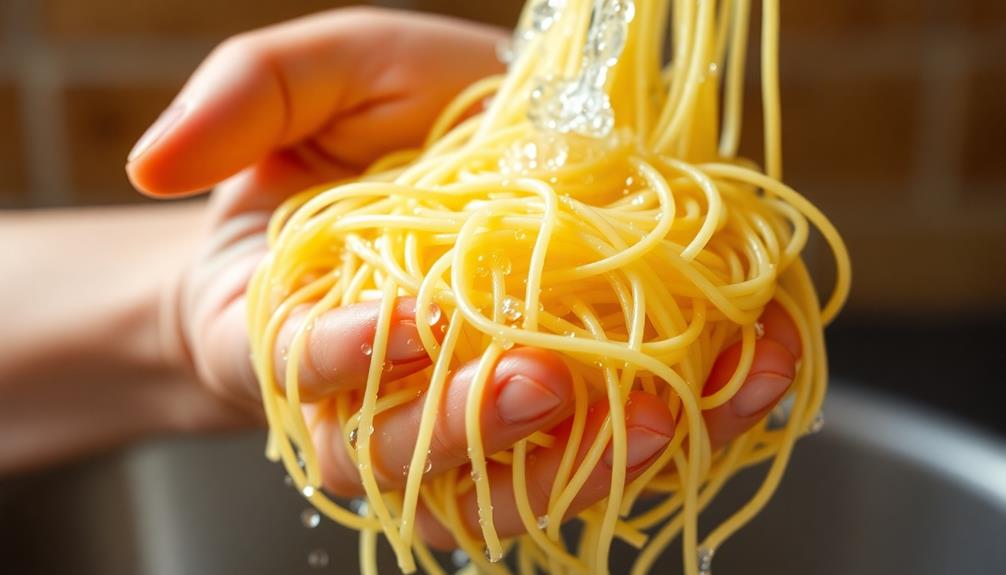
Once the ramen noodles have finished cooking, you'll need to drain and rinse them with cold water. This step is crucial to stop the cooking process and prevent the noodles from becoming mushy or sticking together.
Grab a colander or fine-mesh strainer and carefully pour the hot noodles into it, allowing the steaming hot water to drain away. Don't let the noodles sit in the hot water, or they'll continue cooking.
Next, turn on the cold water tap and thoroughly rinse the noodles. Use your hands to gently separate any clumps, ensuring each strand is evenly coated in the refreshing cold water. This quick chill helps the noodles achieve the perfect chewy texture for your Hiyashi Chuka dish.
Once the noodles are fully rinsed, give them a gentle shake to remove any excess water.
You're now ready to dress the noodles and assemble your delicious cold ramen masterpiece!
Step 3. Toss Noodles With Dressing

With the noodles chilled and drained, you can now toss them with the flavorful dressing. In a large bowl, combine the chilled noodles, soy sauce, rice vinegar, sesame oil, and a pinch of sugar. Gently toss the ingredients together until the noodles are evenly coated.
Next, add the julienned cucumber, shredded carrots, and sliced scallions. Toss everything together once more, ensuring the vegetables are distributed throughout the noodles. The cool, crisp veggies will provide a refreshing contrast to the savory-sweet dressing.
For an extra burst of flavor, top the noodles with a sprinkle of toasted sesame seeds and a drizzle of chili oil, if desired. The sesame seeds will add a nutty crunch, while the chili oil brings a touch of heat and richness to the dish.
Toss the noodles gently but thoroughly, ensuring every strand is evenly coated and the flavors are well-combined. Serve the Hiyashi Chuka immediately, while the noodles are still chilled and the vegetables are crisp.
Step 4. Garnish With Assorted Toppings
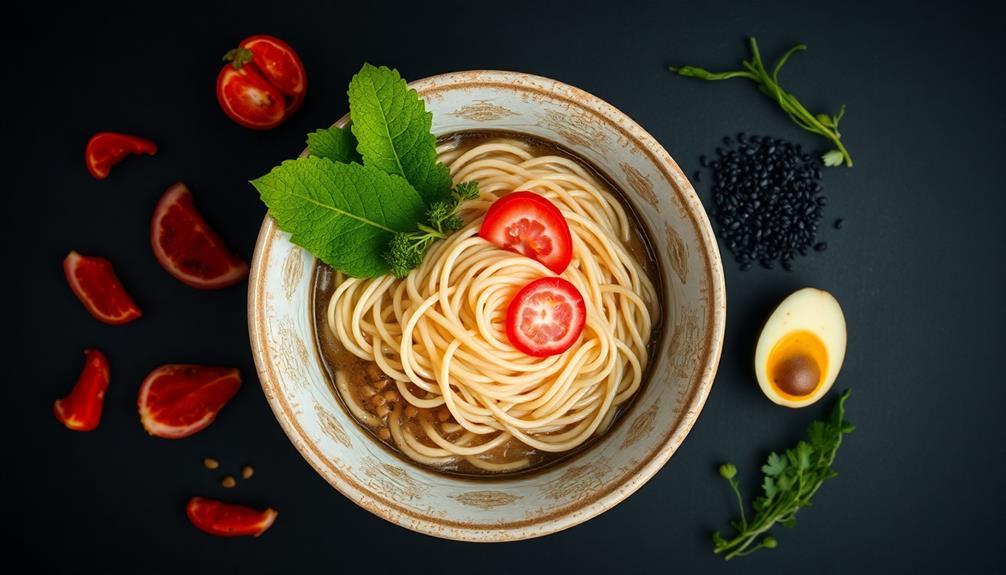
After tossing the noodles and vegetables with the flavorful dressing, it's time to start adding the finishing touches. Gather an assortment of fresh, vibrant toppings to elevate your Hiyashi Chuka dish.
Start by slicing some crisp, juicy cucumbers into thin rounds, then arrange them artfully around the edge of your serving bowl. Next, add a few perfectly cooked shrimp, their pink curves adding a delightful contrast.
Carefully place halves of hard-boiled eggs, their golden yolks glistening. Sprinkle on some finely chopped scallions, their green hues popping against the noodles.
For a touch of crunch, top with a handful of toasted sesame seeds. Finally, finish with a few delicate slices of roasted pork or ham, their savory flavors complementing the overall dish.
Take a step back and admire your masterpiece – the Hiyashi Chuka is now complete, ready to be enjoyed with its harmonious blend of textures and flavors.
Step 5. Serve Chilled
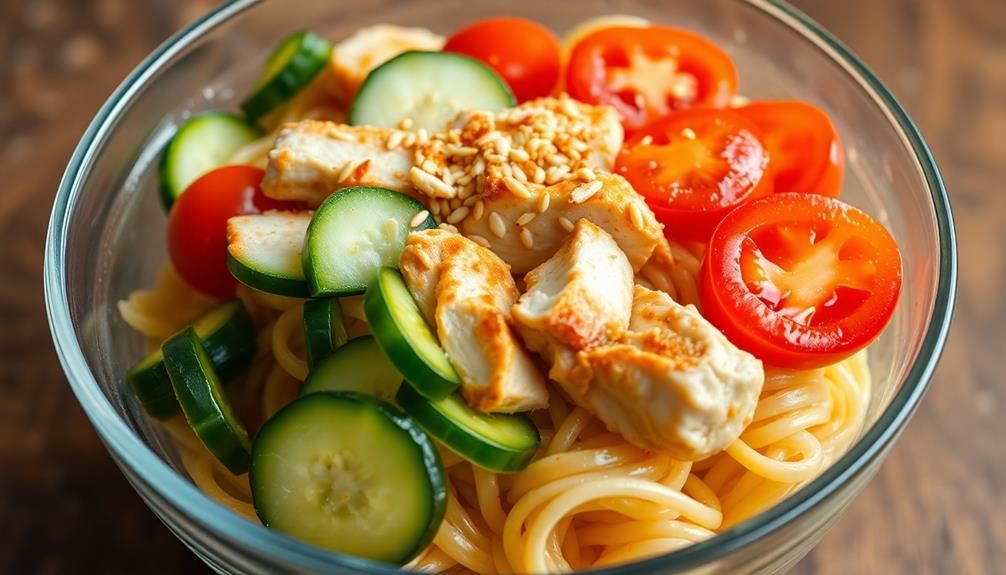
Chill the prepared Hiyashi Chuka for at least 30 minutes before serving. This allows the flavors to meld and the dish to become refreshingly cool.
Once it's had time to chill, you can portion it out into individual bowls. Be sure to include all the tasty toppings – the crunchy vegetables, the juicy chicken, and the soft-boiled egg.
Drizzle the tangy sauce over the top, making sure each bite gets a little bit of that delicious dressing. The cold noodles and crisp veggies are a perfect contrast to the warm, savory toppings.
Garnish with a sprinkle of toasted sesame seeds or chopped scallions for a pop of color and flavor.
Serve the Hiyashi Chuka immediately, while it's still nice and chilled. This dish is best enjoyed cold, so don't let it sit out too long.
Slurp up those noodles and enjoy the refreshing, summery flavors of this Japanese classic!
Final Thoughts
Hiyashi Chuka, the refreshing chilled Chinese-inspired noodle dish, is a summertime delight that offers a delightful blend of flavors and textures. Slurping down these cold noodles is a joyful experience, cooling you off on the hottest of days. The combination of crisp vegetables, savory protein, and the tangy dressing creates a harmonious balance that tantalizes the taste buds.
While Hiyashi Chuka may seem like a simple dish, there's an art to assembling it just right. Carefully arranging the ingredients in an eye-catching presentation is key to elevating the dish.
Don't be afraid to get creative with your toppings, as the possibilities are endless. From vibrant julienned carrots to tender slices of char siu, each addition contributes to the overall symphony of flavors and textures.
Whether you're hosting a summer gathering or seeking a refreshing meal for yourself, Hiyashi Chuka is sure to become a new favorite in your culinary repertoire. Embrace the joy of this chilled noodle dish and savor the flavors of summer.
